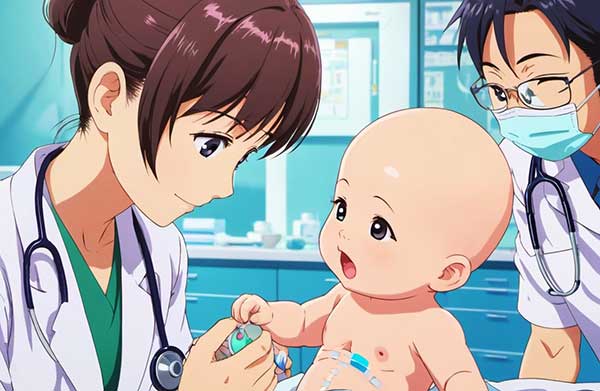 As I sat in the hospital waiting room with my wife, clutching our baby’s tiny hand, our minds were consumed by worry. The pediatrician’s suspicion of developmental dysplasia of the hip (DDH) had sent our family into a tailspin of anxiety. We couldn’t help but wonder: would our little one face a lifetime of mobility issues and chronic pain? The wait for the ultrasound results felt like an eternity.
As I sat in the hospital waiting room with my wife, clutching our baby’s tiny hand, our minds were consumed by worry. The pediatrician’s suspicion of developmental dysplasia of the hip (DDH) had sent our family into a tailspin of anxiety. We couldn’t help but wonder: would our little one face a lifetime of mobility issues and chronic pain? The wait for the ultrasound results felt like an eternity.What is Developmental Dysplasia of the Hip (DDH)?
DDH, also known as hip dysplasia, is a condition where the hip joint doesn’t form properly, causing the ball-and-socket joint to misalign or become unstable. According to the brilliant minds working at the Mayo Clinic, DDH can lead to premature osteoarthritis, mobility problems, and chronic pain if left untreated or undiagnosed. The condition affects approximately 1 in 100 newborns, making it a common concern for parents.
The Importance of Early Detection and Diagnosis
 Early detection and diagnosis of DDH are crucial to prevent long-term complications. The American Academy of Pediatrics recommends that all newborns be screened for DDH at birth and again at 2-3 months of age. However, traditional screening methods, such as physical examination and X-rays, can be subjective and sometimes inaccurate.
Early detection and diagnosis of DDH are crucial to prevent long-term complications. The American Academy of Pediatrics recommends that all newborns be screened for DDH at birth and again at 2-3 months of age. However, traditional screening methods, such as physical examination and X-rays, can be subjective and sometimes inaccurate.The Game-Changing Potential of AI-Aided Hip Dysplasia Screening
Scientists are now exploring the use of artificial intelligence (AI) to aid in hip dysplasia screening using ultrasound in primary care clinics. AI is a new set to technologies that is promising to revolutionize how doctors approach the early diagnostic of potentially life-threatening diseases.
A recent study published in Nature Scientific Reports demonstrated the potential of an AI-aided workflow to improve the accuracy and efficiency of DDH diagnosis. By analyzing ultrasound images with machine learning algorithms, researchers were able to identify hip dysplasia with high accuracy, outperforming traditional screening methods.
This breakthrough has significant implications for families like mine, anxiously awaiting diagnosis and treatment. With AI-aided screening, healthcare providers can:
- Improve diagnostic accuracy: Reduce the risk of false positives and false negatives, ensuring that babies receive timely and effective treatment.
- Streamline the diagnostic process: Automate image analysis, freeing up healthcare professionals to focus on patient care and reducing wait times for families.
- Enhance patient outcomes: Enable early intervention and treatment, reducing the risk of long-term complications and improving quality of life for children with DDH.
A Sigh of Relief: Our Baby’s Ultrasound Results
As we sat in the waiting room, our hearts racing with anticipation, the doctor finally emerged with a warm smile. “The ultrasound results are reassuring,” she said, “your baby’s hip joint is developing correctly.” We exhaled a collective sigh of relief, tears of joy streaming down our faces. Our little one was going to be okay.
In that moment, we realized the importance of advancements in medical technology, like hip dysplasia screening leveraging AI. While our family’s journey was just beginning, we were grateful for the promise of more accurate and efficient diagnosis, and the potential for better outcomes for children like ours.
Keynote Speakers are Humans too
As a keynote speaker, I’ve had the privilege of exploring the intersection of technology and healthcare. Our family’s experience with DDH has given me a newfound appreciation for the impact of AI-aided diagnosis on patient outcomes. As researchers continue to push the boundaries of medical innovation, we can expect to see more breakthroughs like AI-aided hip dysplasia screening.




